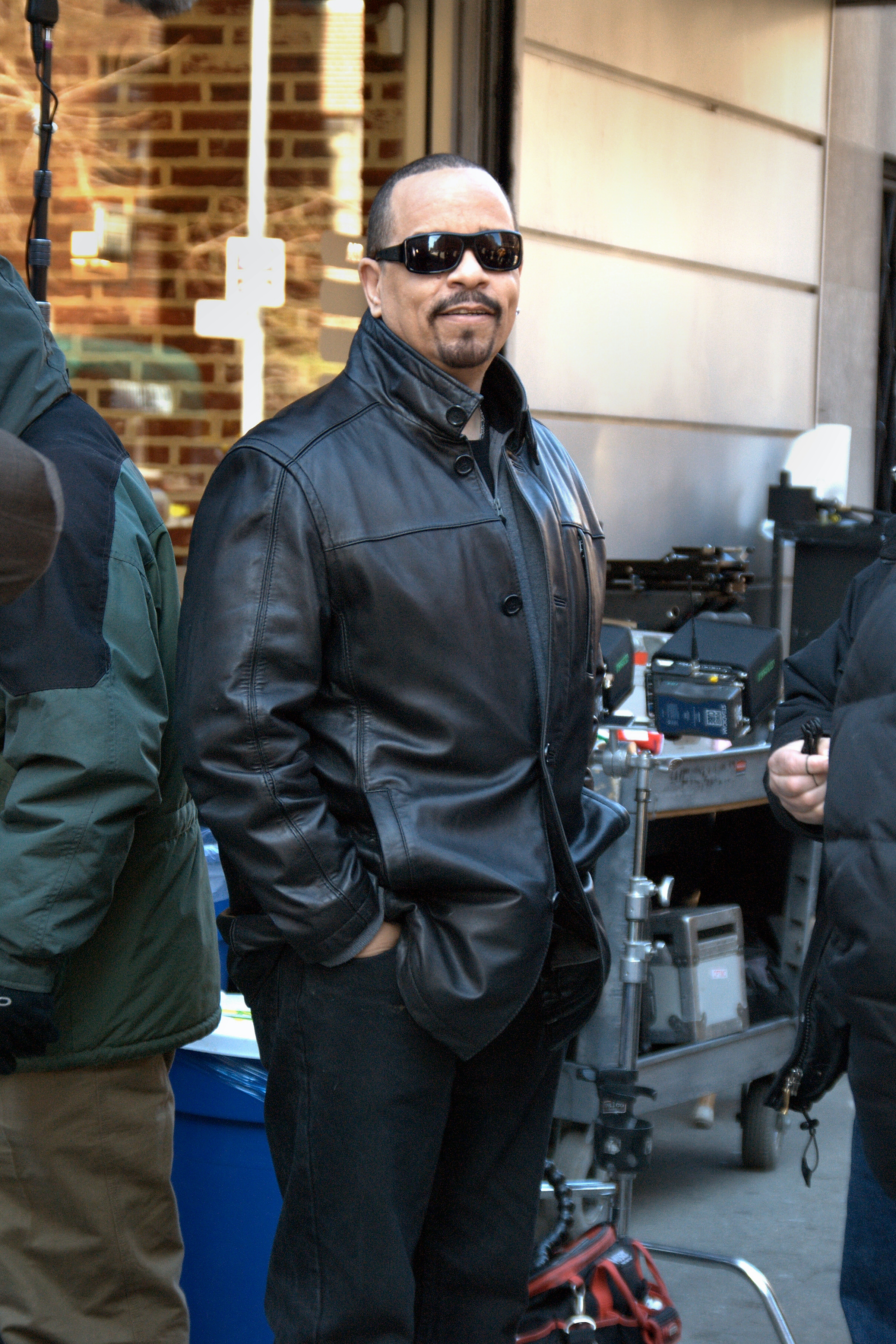flowchart LR
A{Ice-T} --> |observed| B(Abandons criminal life)
A -.-> |missing counterfactual| C(Does one more heist)
C -.-> D[35 years in prison]
B --> E[Fame & Fortune]
classDef grey fill:#fff
class D,C grey
Estimating counterfactuals
Lucy D’Agostino McGowan

Two roads diverged in a yellow wood,
And sorry I could not travel both
And be one traveler, long I stood
And looked down one as far as I could
To where it bent in the undergrowth
— Robert Frost
Potential outcomes
- Prior to some “cause” occurring, the potential outcomes are all of the potential things that could occur depending on what you end up exposed to
Potential outcomes
- Let’s assume an exposure has two levels:
- \(X=1\) if you are exposed
- \(X=0\) if you are not exposed
Potential outcomes
- Under this simple scenario, there are two potential outcomes:
- \(Y(1)\) the potential outcome if you are exposed
- \(Y(0)\) the potential outcome if you are not exposed
Potential outcomes
- Only one of these potential outcomes will actually be realized
- It is important to remember here that these exposures are defined at a particular instance in time, so only one can happen to any individual
- In the case of a binary exposure, this leaves one potential outcome as observable and one missing
Potential outcomes
- Our causal effect of interest is often some difference in potential outcomes \(Y(1) - Y(0)\), averaged over a particular population
Counterfactuals
- Early causal inference methods were often framed as missing data problems
- We need to make certain assumptions about the missing counterfactuals, the value of the potential outcome corresponding to the exposure(s) that did not occur
- We wish we could observe the conterfactual outcome that would have occurred in an alternate universe
Counterfactuals
- To do this, we attempt to control for all factors that are related to an exposure and outcome such that we can construct (or estimate) such a counterfactual outcome.
Ice-T and Spike
Split Decision: Life Stories
Award-winning actor, rapper, and producer Ice-T unveils a compelling memoir of his early life robbing jewelry stores until he found fame and fortune—while a handful of bad choices sent his former crime partner down an incredibly different path.

Ice-T and Spike
flowchart LR
A{Spike} -.-> |missing counterfactual| B(Abandons criminal life)
A --> |observed| C(Does one more heist)
C --> D[35 years in prison]
B -.-> E[Fame & Fortune]
classDef grey fill:#fff
class E,B grey
Ice-T and Spike
- What would need to be true for us to draw a causal conclusion?
- Can we really conclude that Spike’s life would have turned out exactly like Ice-T’s if he had made the exact same choices as Ice-T?
In practice
- We could conduct an experiment where we randomize many individuals to leave criminal life (or not) and see how this impacts their outcomes on average
- This randomized trial seems to present some ethical issues, perhaps we need to look to observational studies to help answer this question
- We must rely on statistical techniques to help construct these unobservable counterfactuals
Does chocolate ice cream make you happier than vanilla?
Happiness Simulation
- Some happiness index exists that ranges from 1-10
- We want to assess whether eating chocolate ice cream versus vanilla will increase happiness
Happiness Simulation (🔮)
What is the average causal effect?
Code
data <- tibble(
id = 1:10,
y_chocolate = c(4, 4, 6, 5, 6, 5, 6, 7, 5, 6),
y_vanilla = c(1, 3, 4, 5, 5, 6, 8, 6, 3, 5)
)
data <- data |>
mutate(causal_effect = " ")
data |>
gt() |>
cols_label(
id = "ID",
y_chocolate = md("$Y_{\\text{id}}(\\text{chocolate})$"),
y_vanilla = md("$Y_{\\text{id}}(\\text{vanilla})$"),
causal_effect = md("$Y_{\\text{id}}(\\text{chocolate}) - Y_{\\text{id}}(\\text{vanilla})$")
) |>
fmt_markdown(
columns = c(y_chocolate, y_vanilla, causal_effect)
) |>
tab_header(
title = md("**Potential Outcomes and Causal Effect**")
) |>
tab_spanner(
label = "Potential Outcomes",
columns = c(y_chocolate, y_vanilla)
) |>
tab_spanner(
label = "Causal Effect",
columns = causal_effect
)| Potential Outcomes and Causal Effect | |||
|---|---|---|---|
| ID | Potential Outcomes | Causal Effect | |
| \(Y_{\text{id}}(\text{chocolate})\) | \(Y_{\text{id}}(\text{vanilla})\) | \(Y_{\text{id}}(\text{chocolate}) - Y_{\text{id}}(\text{vanilla})\) | |
| 1 | 4 |
1 |
|
| 2 | 4 |
3 |
|
| 3 | 6 |
4 |
|
| 4 | 5 |
5 |
|
| 5 | 6 |
5 |
|
| 6 | 5 |
6 |
|
| 7 | 6 |
8 |
|
| 8 | 7 |
6 |
|
| 9 | 5 |
3 |
|
| 10 | 6 |
5 |
|
Happiness Simulation 🌫
What is the average causal effect?
Code
## we are doing something *random* so let's
## set a seed so we always observe the
## same result each time we run the code
set.seed(11)
data_observed <- data |>
mutate(
# change the exposure to randomized, generated from
# a binomial distribution with a probability of 0.5 for
# being in either group
exposure = if_else(
rbinom(n(), 1, 0.5) == 1, "chocolate", "vanilla"
),
observed_outcome = case_when(
exposure == "chocolate" ~ y_chocolate,
exposure == "vanilla" ~ y_vanilla
)
)
avg_chocolate <- data_observed |>
filter(exposure == "chocolate") |>
pull(observed_outcome) |>
mean()
avg_vanilla <- data_observed |>
filter(exposure == "vanilla") |>
pull(observed_outcome) |>
mean()
data_observed |>
mutate(
y_chocolate = if_else(exposure == "chocolate", y_chocolate, NA),
y_vanilla = if_else(exposure == "vanilla", y_vanilla, NA),
causal_effect = NA_real_
) |>
select(-observed_outcome, -exposure) |>
gt() |>
cols_label(
id = "ID",
y_chocolate = md("$Y_{\\text{id}}(\\text{chocolate})$"),
y_vanilla = md("$Y_{\\text{id}}(\\text{vanilla})$"),
causal_effect = md("$Y_{\\text{id}}(\\text{chocolate}) - Y_{\\text{id}}(\\text{vanilla})$")
) |>
fmt_markdown(columns = c(y_chocolate, y_vanilla, causal_effect)) |>
sub_missing(
columns = c(y_chocolate, y_vanilla, causal_effect),
missing_text = md("---") # Format missing values as blank
) |>
tab_header(
title = md("**Potential Outcomes and Hidden Causal Effect**")
) |>
tab_spanner(
label = "Potential Outcomes",
columns = c(y_chocolate, y_vanilla)
) |>
tab_spanner(
label = "Causal Effect",
columns = causal_effect
)| Potential Outcomes and Hidden Causal Effect | |||
|---|---|---|---|
| ID | Potential Outcomes | Causal Effect | |
| \(Y_{\text{id}}(\text{chocolate})\) | \(Y_{\text{id}}(\text{vanilla})\) | \(Y_{\text{id}}(\text{chocolate}) - Y_{\text{id}}(\text{vanilla})\) | |
| 1 | — | 1 |
— |
| 2 | — | 3 |
— |
| 3 | 6 |
— | — |
| 4 | — | 5 |
— |
| 5 | — | 5 |
— |
| 6 | 5 |
— | — |
| 7 | — | 8 |
— |
| 8 | — | 6 |
— |
| 9 | 5 |
— | — |
| 10 | — | 5 |
— |
Happiness Simulation 🕵️♀️
# A tibble: 2 × 2
exposure avg_outcome
<chr> <dbl>
1 chocolate 5.33
2 vanilla 4.71Why did that (approximately) work?
Slides by Dr. Lucy D’Agostino McGowan